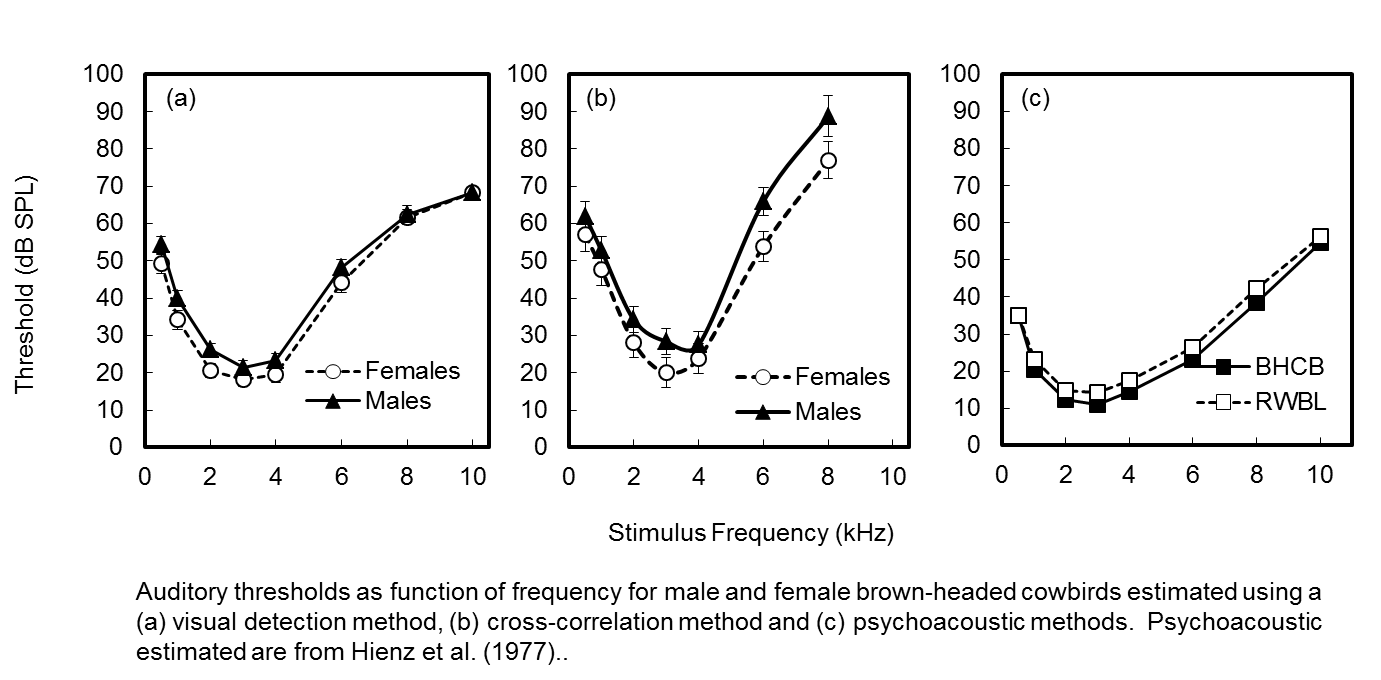Songbirds are well known for producing a diversity of vocalizations. The production of song has intrigued researchers and naturalists alike. It is no surprise then, that we know a great deal about the ontogeny, mechanisms, functions and phylogeny of song production. Our knowledge of the auditory processing of songbirds is less complete however, particularly in the context of function and phylogeny. I am particularly interested in the effects of species identity, sex (male or female), and season (breeding, non-breeding) on auditory processing. The long-term goal of this research is to determine what factors (e.g. habitat, social structure, communication signals, etc.) are important in the evolution of auditory system design independent of phylogeny.
How do we measure Auditory Processing?
 In my work on auditory processing I use a technique called auditory evoked potentials (AEPs) to document natural variation in auditory processing in wild-caught songbirds. Auditory evoked potentials are small electrical changes that are generated when neurons in the auditory nerve and brainstem respond to sound. This change in electrical potential travels through the tissue of the head and can be recorded from the scalp. AEPs are particularly useful when your subject can not respond verbally to a signal (like you would do in a hearing test at your doctor’s office). This technique is used in hospitals to screen the hearing of newborn babies. It doesn’t require animals to be trained and is non-invasive so we can document natural variation in wild-caught animals and even follow the auditory processing of individuals over time!
In my work on auditory processing I use a technique called auditory evoked potentials (AEPs) to document natural variation in auditory processing in wild-caught songbirds. Auditory evoked potentials are small electrical changes that are generated when neurons in the auditory nerve and brainstem respond to sound. This change in electrical potential travels through the tissue of the head and can be recorded from the scalp. AEPs are particularly useful when your subject can not respond verbally to a signal (like you would do in a hearing test at your doctor’s office). This technique is used in hospitals to screen the hearing of newborn babies. It doesn’t require animals to be trained and is non-invasive so we can document natural variation in wild-caught animals and even follow the auditory processing of individuals over time!
What have we found so far?
We have found that species-level variation in auditory processing correlates with vocal production. We have also found that in brown-headed cowbirds females have greater frequency sensitivity and selectivity than males during the breeding season. In house sparrows we have found that the sexes differ in their auditory processing during the breeding season, but are very similar during the non-breeding season. These data suggest that songbirds show seasonal plasticity in their auditory processing and that there may be an adaptive advantage to having enhanced auditory processing during the breeding season. See “Publications” for more details.


